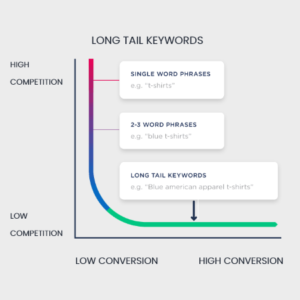SEO Techniques That You May Be Missing Out On Your Website
Search Engine Optimization or SEO is considered to be one of the most popular and effective digital marketing strategies on the Internet. While implementing SEO techniques has become a crucial part of increasing websites traffic and brand awareness. With Google updating its algorithm over 500 to 600 times a year, most SEO specialists need to come up with new and inventive techniques to rank high on search pages.
Another important fact we should remember is that over 75% of people who search don’t scroll past the first page of the search results. This is why you must implement SEO techniques that will successfully beat these algorithm updates and remain on the first page of the search engine result pages. Ranking on the first page of the search engine takes a lot of research and experimentation, it also requires you to stay updated with the latest techniques.
The most basic SEO techniques are where you do keyword research, optimize your blog’s title tags and metadata, and create optimized content. But, if you already mastered the SEO basics you’re probably looking for some new, exciting, and effective SEO techniques that will increase your website’s organic traffic in 2022.
These top eight strategies will drive significant growth in organic visibility and traffic, as well as increase your website’s performance.
But before we get into the top SEO techniques, let us understand what SEO is, its importance, and the current Google Algorithm.
What is SEO?
SEO stands for Search Engine Optimization the process of increasing the quality and quantity of your website traffic simply by increasing the visibility of a website or piece of content and making it rank higher on search engines like Google. The main difference between SEO and paid advertising is that SEO refers to generating ranks organically, without paying to be in that space like paid advertising.

Main Elements Of SEO
- On-site SEO – On-site SEO is the practice of optimizing or improving the content of a particular page or website to improve ranking or visibility. With on-site SEO you have to optimize the structure of your landing pages, add internal links, images, videos, and check the grammar to help the search engines analyze the content of your page or blog.
- Keywords – SEO keywords are certain words or phrases that should be added to your content to make it possible for people to find your website through Google. Remember that picking the right keywords is important and takes diligent research. Make sure to add keywords that are high volume ratings and have low competition.
- Content – Content is the first most important part of SEO as that is what determines your reach and engagement with your target audience. Your content must contain valuable information that your audience is actively searching for. Not only that, but it should also be educational and shareable.
- Local SEO – Local SEO is what helps your website be more visible, especially on the local search results on Google. Since every brand that has a physical location or is placed in a particular geographical area can benefit from local SEO. You can garner more leads from your local area by utilizing local keywords, directory listing, and creating pages for your business on a platform like Google My Business and Google Maps.
- Off-site SEO – Off-site SEO involves SEO techniques that make rank higher by making efforts on web pages outside of your own. The main part of off-site SEO is link building and backlinks, which can generate high traffic to your website.
According to many studies, over 90% of all search queries worldwide are done on Google. To understand SEO works you need to first understand the Google Algorithm through which it analyses and prioritizes content on its pages.
What is Google Algorithm?
Google Algorithms is the ranking system that is designed to retrieve data from its search index which includes hundreds of billions of web pages and instantly delivers the most relevant and useful results to the users. To deliver ranked webpages of whatever the user is looking for, Google uses a combination of algorithms and numerous ranking factors which is called the Google algorithm.
Every day, Google received over 3.5 billion searches in 2019, according to the Internet Live Stat. Some studies have found that over 78% of Americans use the web to look for products and services before buying. According to Internet Live Stats, there are said to be 5,760,000 blog posts being published on the internet every day. And Google uses AI and other algorithms to deliver the most optimal results to the search queries.
According to Google, their algorithms are based on, “many factors, including the words of your query, relevance, and usability of pages, the expertise of sources, and your location and settings.” What you have to remember is that each factor depends on the nature of your query, for example, when a user searches for anything related to the news then Google will pick out the most recent, accurate, and current news topics, other than presenting you with the definitions of the topic.
This is why it is so important to rank on Google search results, ranking can lead to an increase in visibility, bring in more traffic, trustworthiness, better conversations with customers, better user experience, and finally increased revenue. With the algorithm changing almost every day, with 3,200 confirmed changes in 2018 alone, it becomes hard to keep up with best SEO practices. This is why we have concluded the top ten effective SEO strategies that you probably don’t know of!

Top 10 Most Effective SEO Techniques
1) Target Local searches
Targeting local searches is one of the top marketing trends in 2022 because it usually includes looking for local shops, opening hours, contact numbers, email addresses.
If you want to rank on local searches, you should cross-check information to make sure facts are up-to-date and also add extra information such as extra locations, timings during covid, and what forms of payment are acceptable. Double-check your listings, and add information from physical directories (like Yellow Pages) or scanning business registrations.
List your business on Google my business and other local directories like Moz and Yext.
Here are some tips on how you can rank on local searches:
- Do basic research and look for local keywords that relate to your product or service and add it to your landing pages.
- Optimize your meta title, meta description, page title, heading tags, image alt text, and on-site content.
- Build links from local directory listings to strengthen location-based rankings.
- Optimize your website with technical SEO for local searches.
2) Utilize Long Tail Keywords
Long-tail keywords are keywords that are longer (generally made up of three to five words), or keyword phrases people use while searching on search engines. Long-tail keywords are said to be low search volume and high variation because they are very specific than generic keywords or because people can phrase them in different ways. Since long-tail keywords are more specific and less competitive, they allow you to target niche demographics.
You can look for long-tail keywords based on your topic on many SEO tools like Search Console, Semrush SEO, uber suggest, etc, and add them throughout your landing page. A tip for a long-tail keyword is that you can use them in your titles, at least one subheading, and a few more in the main content to get search engine traffic faster and eventually rank on google.
You can form subheadings with long-tail keywords where ever it is appropriate. Long-tail keywords are also beneficial to voice search because it contains three or more words. Also, make sure that your content is better than the competitors who are ranking for a particular long-tail keyword. Here is an example to help you understand better, when a person looks for “custom branded shoes” then Google will also send you relevant subtopics and display a wider range of results such as “logo shoes for companies”, “branded shoes”, “shoes from top brands”, etc.

3) Broken Link building
Broken Link building is one of the most effective SEO techniques where marketers find broken links on websites and reach out to webmasters to receive a backlink from the identified broken link. A broken link refers to a link that you have included in your content and helps you reach content on another site or a link to another page on your own website, but the link is non-existent.
So, if you want to fix a broken link, first you have to find the 404 errors in their external links. There are many ways through which you can find broken links, identifying the sites you would like to receive a link from. The broader approach to finding broken links is searching across any domain. Many marketers also prefer taking broken links from their competitors in the SERPs or a site that has similar content or target audience as your website.
Once you get the broken links, you can contact the webmaster, inform them of the broken link and suggest your own content in its place. You can then look for any relevant piece of content to replace the link or you can create one if you believe that it’ll come in handy. This way you can secure a solid backlink from the targeted page. Most marketers use tools to make this process easy.
4) Improve the User experience throughout your entire website
You have to invest a lot of time in designing a website and its core web vitals because that is what determines whether or not your leads will have a good user experience or not. Google takes into account bounce rate, dwell time, click-through percentage and you can only increase the CTR if the user spends more time on your website.
This is why it is important to optimize your website to prove the target audience with the best experience. Google is getting better at determining site quality. It can now identify if a website is untrustworthy, is slow to load, outdated, then rank you based on that.
The first thing you should do to improve user experience is to make your posts easy to read, optimize content, write quality content, shorter paragraphs, and mixed sentence lengths. Make sure it is formatted well, is in bullet points, and does not have excess white space.
Tools such as Crazy Egg, scroll map, confetti mapping, Optimizely, etc can be used to improve the website experience. The things that should be taken into account while designing a website is the
- Navigation experience – How easy it is to use your website? Can they find what they are looking for?
- Reading Experience – How easy your articles are to read?
- Mobile friendly – Does your site have a mobile responsive design?
- The position of ads, sales, or offers – Are they able to access the offers?
- Page speed – How long does it take to load the landing pages?
- Content quality – Does it have typos, broken links, or just plain poor content?
- Links and CTAs – Are the links and content up to date? Are they broken links? Are the CTAs in the right places?
5) Optimize for Voice and Image Search
According to a study done by Martech, over 25% of Americans own a smart speaker, which is said to increase to a whopping 55% by 2025. While 72% of voice-activated speaker users say that they use the device as a part of their daily routines. This is why it is important to optimize your content for voice search. The Voice search industry has grown immensely over the years, with voice commerce sales reaching $1.8 billion in 2021 and expected to reach $40 billion by the end of 2022, according to OC&C Strategy Consultants.
While optimizing content for voice remember that you have to add a long-tailed keyword. For example, if someone searches for “what is SEO?” you should have this keyword in your content in order to be sent to the voice searcher. And since voice research is mostly taken from featured snippets, so aim to write for featured snippets.
Image Search is another evolving and growing technology that you must take advantage of. Image search gives you a huge potential of grabbing traffic with a medium your competitors might not know of yet. For image search optimization you have to implement image SEO techniques, which requires you to tag your images with alt tags, change the images’ file names, resize the existing images, reduce their file size, check the quality of your images, etc.
6) Find your competitor’s best-performing pages and copy their keywords
This is one of the most lesser-known and effective SEO techniques, as the more you know about your competitor’s strategy the better your site will perform. By analyzing your competitor’s website, you will be able to find out the keyword or content gap, link gaps, understand where their organic traffic is coming from and this will allow you to improve your blogs or landing pages.
Something as simple as signing up for your competitor’s newsletter can reveal a lot about their SEO strategy. With these insights in mind, you can form a better strategy and even steal some of their keywords to add to your existing content. So, look for the top keywords that your competitors already rank for. To find out these keywords, you can use keyword research tools like Semrush. But make sure to choose relevant keywords that will make sense to your audience or in business.
7) Design for Mobile
Designing your pages in the terms of mobile is extremely important because most of the searches done today are from smartphones. According to a study, over 77% of Americans own a smartphone, while 79% of smartphone users have made a purchase online using their mobile device in 2021. Even Google has become mobile-first in 2020, this should tell you the amount of importance you should give to designing your website so it is mobile friendly.
Your website should look good and performs the same on mobile devices. You have to make sure that all the content should change its size to fit a smaller screen to give the customer a good user experience, as it becomes easy to read and scroll through. Here is another fact to convince you, over 45% of all e-commerce sales in the US was done on a mobile device in 2020, which constitutes over $284 billion in itself!
8) Focus on Featured Snippets
Featured snippets are brief excerpts from a webpage that appears on Google or any other search engine SERPs to quickly answer a user’s question. Featured snippet content is automatically taken from webpages that have been indexed by Google. The most common examples of featured snippets are definitions, lists, steps, and tables.
It usually occurs when you have an easily quotable source of information on a search query. Make sure you have great content that is divided into subheads or smaller paragraphs that focus on one thing. You also have to perform a lot of off-page SEO to get these results. Featured snippets usually appear in position zero, or at the very top of the SERP page in a rectangular box.
So if your content is featured, you will get more clicks on the links after being featured in the snippet box.
Here are some ways you can get your content in the featured snippets:
- By using Long Term Keywords
- Adding questions to your content
- Formatting paragraph, list, table, and video wisely
- Making short clear and precise paragraphs
9) Increase the speed of your website
This is another SEO technique that is not heard about. According to a study, over 40% of people close a website if it takes more than 3 seconds to load. The same study also found that 47% of consumers actually expect a page to load within 2 seconds, and if that doesn’t happen, they will get out of your website.
Slow loading speeds can lead to a load of problems such as higher bounce rate, lower traffic, decreased number of returning visitors, less time spent on site, etc. Another main problem can also be that it won’t rank higher on the SERPs. Even Google has confirmed that the loading speed is an important ranking factor.
Make sure to regularly check and improve the speed, especially if you’re adding large plug-ins or images on a regular basis. The site speed can make or break your site’s performance in Google’s search results.
To improve speed, you can use SEO tools such as
- PageSpeed Insights – to help developers improve site performance.
- Accelerated Mobile pages – will help increase the speed of mobile sites.
- Test my Site – will check the response rate and if the webpage is mobile friendly through speed as a parameter.
- Google Pagespeed Insights, GTmetrix, and Pingdom will diagnose the speed of the website for you and help you improve it.
10) SEO audit
SEO audit is a process of analyzing how well your website’s presence relates to the best practices. SEO audit will help you generate key information for you to help make your site better within minutes. Besides that, you can also identify as many foundational issues affecting organic search performance as possible.
By doing the process you can figure out how SEO issues are affecting online priorities, goals, or revenue and then solve them. After your SEO audit, make sure that the recommendations are actionable, prioritized, and have a clear path of completion. SEO audit is a time-consuming process as it takes over from 2-6 weeks to complete. However, it is the way to uncover the root causes of the issues affecting your website’s online health.
During the audit, an SEO specialist uncovers several SEO opportunities on your website. It is very important to have regular check-ups to ensure everything is in order. Websites must have an SEO audit at least once or twice a year, as you can fix critical issues as they arise before it gets too late.
SEO audit will help you find issues such as
- Technical SEO issues
- Website structure issues
- On-page SEO issues
- Potential off-site problems
- User experience issues
- Content gaps and opportunities
- Competitive marketplace insights
Conclusion
We know that SEO is constantly adapting and keeping up with its trends can get difficult. But if you can master the basic SEO techniques and techniques, we have mentioned above you will be able to rank on Google or other search engines in no time. Remember to understand your audience, your goals and implement the fundamentals of solid content creation. Hopefully, these SEO techniques helped you bring about a big change in your website’s click-through rates, maximize its potential, increase engagement, and, of course, rankings.










